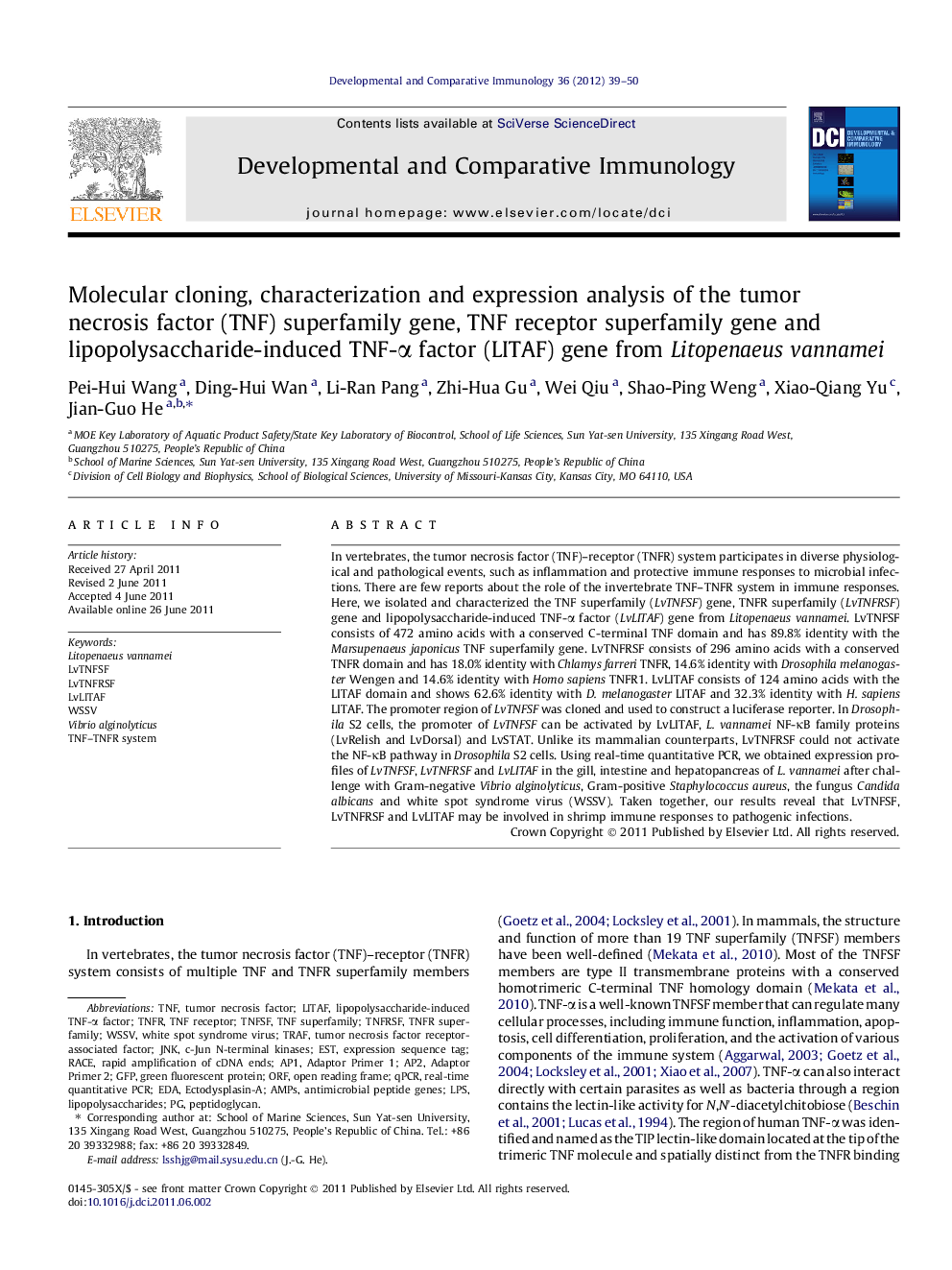| کد مقاله | کد نشریه | سال انتشار | مقاله انگلیسی | نسخه تمام متن |
|---|---|---|---|---|
| 2429397 | 1106494 | 2012 | 12 صفحه PDF | دانلود رایگان |

In vertebrates, the tumor necrosis factor (TNF)–receptor (TNFR) system participates in diverse physiological and pathological events, such as inflammation and protective immune responses to microbial infections. There are few reports about the role of the invertebrate TNF–TNFR system in immune responses. Here, we isolated and characterized the TNF superfamily (LvTNFSF) gene, TNFR superfamily (LvTNFRSF) gene and lipopolysaccharide-induced TNF-α factor (LvLITAF) gene from Litopenaeus vannamei. LvTNFSF consists of 472 amino acids with a conserved C-terminal TNF domain and has 89.8% identity with the Marsupenaeus japonicus TNF superfamily gene. LvTNFRSF consists of 296 amino acids with a conserved TNFR domain and has 18.0% identity with Chlamys farreri TNFR, 14.6% identity with Drosophila melanogaster Wengen and 14.6% identity with Homo sapiens TNFR1. LvLITAF consists of 124 amino acids with the LITAF domain and shows 62.6% identity with D. melanogaster LITAF and 32.3% identity with H. sapiens LITAF. The promoter region of LvTNFSF was cloned and used to construct a luciferase reporter. In Drosophila S2 cells, the promoter of LvTNFSF can be activated by LvLITAF, L. vannamei NF-κB family proteins (LvRelish and LvDorsal) and LvSTAT. Unlike its mammalian counterparts, LvTNFRSF could not activate the NF-κB pathway in Drosophila S2 cells. Using real-time quantitative PCR, we obtained expression profiles of LvTNFSF, LvTNFRSF and LvLITAF in the gill, intestine and hepatopancreas of L. vannamei after challenge with Gram-negative Vibrio alginolyticus, Gram-positive Staphylococcus aureus, the fungus Candida albicans and white spot syndrome virus (WSSV). Taken together, our results reveal that LvTNFSF, LvTNFRSF and LvLITAF may be involved in shrimp immune responses to pathogenic infections.
► Litopenaeus vannamei TNF superfamily gene, TNFR superfamily gene and lipopolysaccharide-induced TNF-α factor gene were cloned.
► In Drosophila S2 cells, LvTNFRSF localized to the membrane and cytoplasm, LvLITAF aggregated in the cytoplasm and nucleus.
► Unlike its mammalian counterparts, LvTNFRSF could not activate the NF-κB pathway in Drosophila S2 cells.
► LvTNFSF promoter can be activated by LvLITAF, L. vannamei NF-κB family proteins (LvRelish and LvDorsal) and LvSTAT.
► qPCR analysis indicated the expression of LvTNFSF, LvTNFRSF and LvLITAF responded to microbial infections.
Journal: Developmental & Comparative Immunology - Volume 36, Issue 1, January 2012, Pages 39–50